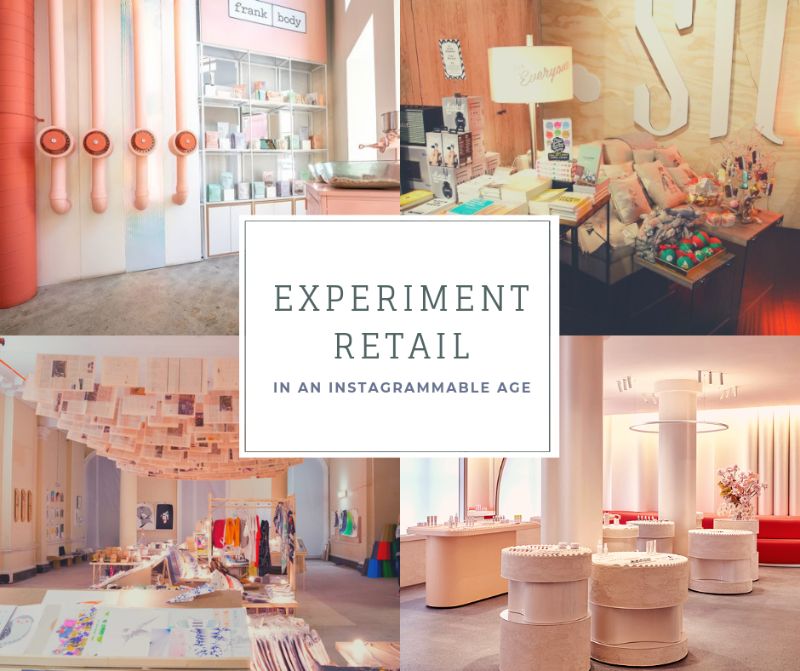
July 11, 2019 – Experiment retail is somewhat of a new term that gives reason to why customers should visit a brick and mortar.
The fate of brick and mortar has been a hot topic for years but one thing is for certain: There is opportunity for stores to create experiences where customers want to come in – opportunities that online shopping cannot provide.
Experimental retail is all about creating “Instagrammable” moments. This is a total 2019 phrase but definitely significant and important to understand – so important that it’s an actual adjective, according to Merriam-Webster dictionary. The goal of a retail store should be to give the customer an experience they want to brag about and ultimately post online and share, so the world can see. Whether it’s a limited time product – we’re looking at you, Starbucks Unicorn Frappuccino, or a trendy neon sign at a local hot spot that screams “take a picture with me!”, opportunities are out there for retailers to capitalize on this social-sharing age.
While those examples are fun and bring awareness to a brand, they are temporary and retailers should look to create experiences that keep customers coming back for more.
Having an experimental store format is another way retailers are changing the game. Amazon Go opened in Seattle in 2018 and aimed to provide grocery items to customers who would not need to be checked out by a cashier. Customers would go in, grab what they needed and on their way out, sensors would pick up RFIDs on their items and automatically charge their Amazon account. This experimental store was designed to drive grocery sales, since customers still prefer to visit a physical store to choose their groceries.
STORY, a New York retailer, has a concept store that “takes the point of view of a magazine, changes like a gallery and sells things like a store”. They have products from different brands with a common theme. Then, every four to six weeks, they change the theme and products to something completely different, for a new experience, which encourages consumers to consistently come back and see what’s new.
Another example of in-store experiences is offering a different product or service than what the brand is typically known for. DSW, the footwear retailer selling designer and name brand shoes and accessories, recently added nail salons to some of its stores to offer customers a special service while shopping. The company hopes that offering this service will complement the shoes they sell while also bringing in new shoppers.
Brands should recognize a few things before trying experimental retail:
Understand the customer
Ensure that any new concept or product is only going to increase the brand loyalty.
Keep an eye on competition
Attempt to stay a step ahead and continue to differentiate the brand.
Focus on creating relationships and brand awareness
It’s not always about sales. Creating something new and innovative can bring awareness to people who may not have used the brand before, and then, hopefully turn them into customers.
Adapt to the market
Whichever industry it is, understand the shift of need and listen to what consumers want. Stay relevant.
Embrace technology
A tech-forward approach allows a company to tap into new territory and, honestly, the sky’s the limit. Technology can track and analyze data, which helps to understand more about the customer and better cater to them.
Experimental retail can be beneficial for both new companies and trusted brands. It’s a completely customizable approach to encourage foot-traffic to a physical store and compete with online retail. Once shoppers are in the door, make it easy for them to do the rest by sharing online and talking about their experience.